
25 of the Best Comics About Social Justice for Every Reader
“It’s always been that way.” For the record, I hate those words: It’s always been that way. Yet there is something powerful about breaking that sentence and rebuilding it with the strength of social justice and graphic books. Because graphic novels/memoirs and comics about social justice have always been here. And there is a lot to be said for the courage in comic books to lift the finger and say, “It does not need to be that way anymore.”
I mean, every time a precious cis het white fanboy starts to whine about “SJ ruining comics for everyone”, there is nothing I love better than laughing back at them: “Social Justice has always been in comics!”
My first love for comic books will always be X-Men, possibly the most well-known and least subtle in its messaging. From there, I have tasted the bittersweet flavour of social justice roll across Magneto and the Holocaust, Spider-Man and anti-intellectualism in our schools, Sam Wilson and all those bastards saying he wasn’t worthy of Cap’s Shield, and then, of course, Captain Marvel herself.
However, I was much older when I started appreciating the graphic novels that were more brazen in their message for social justice. And as my interests grew bolder and my voice grew louder, I realised how important it is to have a good range of graphic novels and comic books to keep the message going.
Here’s my list of the best graphic novels and comic books for Social Justice Week. Because Graphic Novels and Comic Books have always been about social justice.
It’s always been that way.
Young Readers for Social Justice
 American Born Chinese by Gene Luen Yang
American Born Chinese by Gene Luen Yang
A nice easy-read for younger readers, American Born Chinese is a graphic novel consisting of three different stories: the legendary Monkey King; a first-generation child of Chinese immigrants; and a white American boy with a Chinese cousin who visits once a year. Yes, the three stories are going to interrelate, however, the transformation is sweet and understanding. It provides a comfortable platform for kids to address social issues such as racism, biracial identities, and cruelty of stereotypes.
 Child Soldier: When Boys and Girls Are Used in War by Jessica Dee Humphreys, Michel Chikwanine, and Claudia Davila
Child Soldier: When Boys and Girls Are Used in War by Jessica Dee Humphreys, Michel Chikwanine, and Claudia Davila
While this book is suggested for 10 years and older, I strongly recommend parents read it first before handing it over to any child under the age of 12. It is a graphic novel memoir of Michel’s life in the Democratic Republic of Congo during 1993. When Michel was 5 years old, he was kidnapped by a rebel militia to be trained as a child soldier. He was lucky to escape two weeks later. There are very few happy stories from these circumstances, and Michel’s memoir is both respectful and honest. From ‘child soldier’ to ‘refugee immigrant’, Michel’s story shares insight many kids may not truly grasp but will build their empathy on this issue.
YA Social Justice
 Americus by M.K. Reed and Jonathan Hill
Americus by M.K. Reed and Jonathan Hill
What Americus lacks in subtlety, it makes up for in communication and appreciation for libraries everywhere. Our protagonist, Neal, is an easy-going outsider, a reader, and a fan of all things fantasy. Life is pretty good until his best friend’s mother demands the censorship of their favourite book, “Apathea Ravenchilde” because it offends her religious values (see? Not subtle). All of these issues are real-life but the story itself is highly exaggerated – and this is okay because it stays relatable to the targeted teen-audience. Reed knows her audience and she knows how to reach them on the hard topics.
 Aya by Marguerite Abouet and Clement Oubrerie, translated by Alisia Grace Chase and Helge Dascher
Aya by Marguerite Abouet and Clement Oubrerie, translated by Alisia Grace Chase and Helge Dascher
Okay, this one is a little lighter but no less telling in its perspective of society, particularly that of the Ivory Coast during the late 1970s: the peak of prosperity and a time when there was no war. It might seem a little weird to suggest Aya as a social justice comic but it is equally important to portray life before conflict as it is to show the conflict itself. Aya is one of the rare books showing Africans happy with full lives, before recession and drought. When young African adults were not so different from Americans. This is beautiful storytelling of the spirit of the Ivory Coast and the positive nature of its people, based on the life experience of the creators. So enjoyable and so insightful.
War and All that Comes With It
 Citizen 13660 by Miné Okubo
Citizen 13660 by Miné Okubo
Miné Okubo was forced into “protective custody” immediately after the Pearl Harbour bombing. As ‘Citizen 13660’, Okubo documented her experiences in illustrative form and later collected them in this heartbreaking and honest memoir. It is a truly amazing insight into the fear that permeates a society that looks to ‘easy differences’, even when so many of those incarcerated were American citizens themselves.
 The Best We Could Do by Thi Bui
The Best We Could Do by Thi Bui
There are many books about the hardships that force refugees to become refugees. There are also many books about what happens after moving to a new country and what they face there. It is harder to find books, especially graphic books, that balance both stories, This isn’t the story of one person’s experience; this is the story of one family doing the best they can to survive as a family. The survival of refugees often depends on the support of family and the burden carried by parents, often without children ever really knowing.
 The Complete Maus by Art Spiegelman
The Complete Maus by Art Spiegelman
First published in 1986, Maus remains the benchmark for any graphic novel or comic that addresses any social justice issue. The creator, Art Spiegelman, has taken the very real history of his father’s experience during the Holocaust and presented them in the form of animals. Jewish people are mice, Germans are cats, and Polish are pigs. The horror of the Holocaust is not something that should be shied from, however, and Spiegelman shares his father’s story with innocent artwork and tightly woven storytelling. You may think the anthropomorphic personification may soften the blow – it doesn’t. If anything, it will remind you how vulnerable social justice is and why we still need to tell these stories today. One of the strongest themes in Maus is how trauma from events like the Holocaust are carried down generations, like that between Art and his father.
Feminism
 Bitch Planet by Kelly Sue DeConnick and Valentine de Landro
Bitch Planet by Kelly Sue DeConnick and Valentine de Landro
A favourite amongst Book Rioters, with fellow Rioter Nicole saying it best: “If The Handmaid’s Tale and The Hunger Games had a comic baby, it would be Bitch Planet.” In a possible dystopian future, Earth is ruled by The Fathers – and that is exactly as misogynistic as it sounds. Women are expected to be ‘compliant’ and perfect within The Fathers’ view. ‘Non-compliant’ women are sent to Bitch Planet. In a direct reference to the current state of women prisons, Bitch Planet is about both women and race. It relates to the social justice issues relating to feminism but it also relates to the racism within feminism without being too exploitative about it. There have been a couple of missteps, as can happen when dealing with socially-charged issues like this, but overall this breathes fresh air on issues so old, they feel stagnant.
 Brazen by Penélope Bagieu
Brazen by Penélope Bagieu
It’s no surprise to see Brazen on my list. It is still my favourite book to shine a light on the amazing stories of women throughout history. My 13-year-old son still regularly takes it off the shelf for a quick read; my 10-year-old son has just started to do the same. What I love most about the short histories is the selection; these are not the most famous women in history. In fact, there are a large number of women I had never heard of before, because of their stories and the unbelievable injustice they had to face. Some of them heartbreaking, some uplifting. And all of them are true to the characters of the women they represent, not just the creator herself. Love it.
 Glitterbomb by Jim Zub and Djibril Morissette-Phan
Glitterbomb by Jim Zub and Djibril Morissette-Phan
For Zub, the story for Glitterbomb was mostly complete by the time #MeToo hit peak media coverage and the similarities were a little too close to home. At the time, he was worried they had gone too far; he is now horrified his portrayal of Hollywood didn’t go far enough. What we have is a story of a middle-aged actress who is struggling to find work. Her frustrations attract something far more sinister and supernatural, responding to the dark nature of the industry itself. A mix of horror and feminism in a way that empowers rather than victimises older women.
 La Lucha: The Story of Lucha Castro and Human Rights in Mexico by Jon Sack and Adam Shapiro
La Lucha: The Story of Lucha Castro and Human Rights in Mexico by Jon Sack and Adam Shapiro
Lucha Castro has lived a life that belongs in comic books. She is a former lawyer and human rights defender. La Lucha is her story, struggling against the organised crime in Mexico and investigating the unsolved murders of the border state, Chihuahua. It is a collection of short stories, detailing the plight for justice and the dangers of doing so. The majority of victims are women, often killed for simply being women or sometimes for seeking social justice themselves. If nothing else, you will gain admiration for the stamina of Lucha and her team of advocates in the face of corruption and outright evil.
 Photographic: The Life of Graciela Iturbide by Isabel Quintero and Zeke Peña
Photographic: The Life of Graciela Iturbide by Isabel Quintero and Zeke Peña
I love this book; partly because I love the photo “Our Lady of the Iguanas”. Iturbide’s photography is mesmerising, filling my head with questions and stories from one simple image. Iturbide’s eye reveals stories hidden deep in every scene around her. She followed her eye during a time where she was only ever expected to be a mother. Instead, her photography has shown people all around the world how to look – to really look – at the world around us.
 The Complete Persepolis by Marjane Satrapi, translated by Mattias Ripa, Blake Ferris, and Anjali Singh
The Complete Persepolis by Marjane Satrapi, translated by Mattias Ripa, Blake Ferris, and Anjali Singh
This is the collection of two books: the first is a retelling of Satrapi’s childhood in Iran during the Islamic Revolution of the 1980s, and the second is a coming-of-age when she returns to Iran after living for some time in Austria. It is important to remember the time and geography for each as it plays a big part in Satrapi’s depiction of life and culture; both with her family and the society she lives in. Even the action of ‘donning her veil once more’ is a gesture of the mind-switch she needs to recognise the difference between her two lives. I feel like there is a level of irony in the writing when talking about the social injustice in Iran; especially when Satrapi compares it with equally disturbing issues in Europe. The only thing that seems to differ is the position of politics at the time.
Social Justice and the Black Movement
 Bluesman by Rob Vollmer and Pablo G. Callejo
Bluesman by Rob Vollmer and Pablo G. Callejo
As the daughter of a jazz musician, I love how this story is presented like a traditional 12-bar blues song; three sections with four chapters apiece. I know it’s a small thing but it’s the small nods to the nature of the blues that help round out the story and its main characters, Lem Taylor and Ironwood Malcott. Lem and Ironwood are a pair of 1920s bluesmen, travelling across Arkansas and playing their music. However, this wouldn’t be a blues song without some sort of trouble. For Lem, it’s the worst: accused of murder, he escapes a lynch mob and searches for the man who framed him. And the beginning is the softest part. This story dives deep into the race-fuelled violence and brutal social justice prevalent to 1920 America. Best read with a stiff drink.
 Incognegro by Mat Johnson and Warren Pleece
Incognegro by Mat Johnson and Warren Pleece
Zane Pinchback, the main character for Incognegro, is a biracial reporter for a fictional black-owned newspaper. He is considered “white enough” to work undercover. Likewise, Incognegro is a social justice graphic novel lightly disguised as a 1930s-style murder mystery. There is so much to unpack, from social acceptance to personal identity and modifying ourselves (and our behaviours) for the comforts of others. I love how Johnson does not take the convenience of rewriting history and instead delivers us down the road of revelations.
 March: Book One by John Lewis, Andrew Aydin, and Nate Powell
March: Book One by John Lewis, Andrew Aydin, and Nate Powell
March does not pull any punches; as a first-hand account of John Lewis’s life, there is no opportunity to do so. You may as well jump right in and feel the spirit of the civil and human rights movements battle around you. Many of us wonder how our social justice heroes ever find themselves in the position of one day saying, “Enough. Today, I go to war.” Lewis is very clear with his story and shows exactly the road he has taken. It is not an easy road, and this is not an easy read, but the stark black/white illustrations help keep the tone of the history and make for a compelling read.
Social Justice and Graphic Journalism
 Climate Changed: A Personal Journey through the Science by Philippe Squarzoni
Climate Changed: A Personal Journey through the Science by Philippe Squarzoni
One of the biggest hurdles for climate change activists is the delivery of the message. If we rely too much on science, our audience tends to lose interest; not enough science and the deniers start yelling over us. Squarzoni has found an excellent balance, relying on investigative journalism and scientific research to support the straight-forward illustrations. It reads like a documentary and highlights as much of the process as the message. It is Squarzoni’s journey front and centre. And yes, there is a fair dose of “practice what you preach as well”. The book is printed on FSC-certified paper from responsibly-managed, environmentally-sound sources.
 Rolling Blackouts: Dispatches from Turkey, Syria, and Iraq by Sarah Glidden
Rolling Blackouts: Dispatches from Turkey, Syria, and Iraq by Sarah Glidden
This book is as much about the journalistic process as it is about the conflict in Turkey, Syria, and Iraq. In the same way as Climate Changed, Glidden takes great care in showing the diversity in scenarios which journalists need to navigate before presenting the story. Journalists have a great responsibility in presenting the news, and the majority of them take this responsibility seriously. However, when it relates to social justice and conflict scenarios, the precarious reliability of information makes it the task so much harder.
Xenophobia
 Infidel by Pornsak Pichetshote, Aaron Campbell, Jose Villarrubia, and Jeff Powell
Infidel by Pornsak Pichetshote, Aaron Campbell, Jose Villarrubia, and Jeff Powell
I revisited Infidel last night because I couldn’t remember if it was as horrifying as I remembered or if I was dramatising it all in my head. And yes, it was horrifying. On two very distinct levels. One, because it is a horror story and damn, the imagery delivers the horror!! But more importantly, on a second level, the horror of the story is in the fear of those around us – especially those who give in to their fears with bigotry and discrimination. Infidel is the story of a Muslim woman who has moved in with her partner and his daughter to an old building with history. A previous resident committed a horrible terrorist attack, leaving behind damage, death, and soul-stealing fear for the survivors. This is a story that feeds off xenophobia and will leave you questioning how you would respond in the same circumstances.
 Secret Identities: The Asian American Superhero Anthology edited by Jeff Yang, Keith Chow, Parry Shen, and Jerry Ma
Secret Identities: The Asian American Superhero Anthology edited by Jeff Yang, Keith Chow, Parry Shen, and Jerry Ma
This is no sidekick to superhero comics. Nor is it the villain in the fight for social justice. It is a near-perfect collaboration from Asian American creators, addressing the cultural sensitivity missing from white-dominant comics. The stories offer plenty of support to #OwnVoices and encourage all creators to think beyond that which is convenient even though racist. I love this as a strong statement against the stereotyping of Asians in superhero comics.
Sexuality, Gender Identity, and All That We Are
 Death Threat by Vivek Shraya and Ness Lee
Death Threat by Vivek Shraya and Ness Lee
For a story about horrible and horrifying hate, Death Threat is a stunning and vibrant graphic novel. Shraya chose the perfect medium to share her story; Lee brings the right amount of vivid illustration to balance the serious nature. In 2017, Shraya received transphobic hate mail and violent harassment from a stranger. I admire Shraya’s bravery and creativity to take this experience and turn it into a beautiful book of power. Side note: the original harasser was so intimidated by the release of this book, they sent a cease and desist letter to Sharya claiming, of all things, copyright and intellectual infringement. Instead, we have a gorgeous book about the impact of hate-mail, transphobia, and the impact of social media. Now THAT is social justice at work.
 Esther!: A True Story by Sandra Broman and Esther Olivares
Esther!: A True Story by Sandra Broman and Esther Olivares
I first learned about Esther! from the Australian Ledger Awards 2019, where it received the Silver Ledger. I had to read the whole book, and I was not disappointed. This is Esther’s life from 1939 to 1977, during a period already volatile for those living in Chile (never mind if you happened to be a lesbian). Esther! is a story of politics, identity, and strength to stand up against injustice, despite landing in trouble over and over again.
 Gender Queer by Maia Kobabe
Gender Queer by Maia Kobabe
Sometimes the best social justice gives quiet guidance for change through acceptance. Kobabe’s memoir, Gender Queer, is a quiet reflection on eir personal history. It is also a sensitive guide for cisgender readers to understand nonbinary gender identities. There is no conflict between message and audience because Kobabe has no conflict within eir views. Admittedly, I needed to look-up “Spivak pronouns” to understand the references to e/em/eir. However, Kobabe’s throughout the book gave me a better understanding into eir experience. Share it with peers who are still learning to challenge the idea of “It’s always been that way”.
 Second Avenue Caper: When Goodfellas, Divas, and Dealers Plotted Against the Plague by Joyce Brabner and Mark Zingarelli
Second Avenue Caper: When Goodfellas, Divas, and Dealers Plotted Against the Plague by Joyce Brabner and Mark Zingarelli
This is totally and utterly a true story: a group of artists and activists, desperate to help in the “fight against AIDS”, become smugglers for an experimental drug from across the border in Mexico. The greatest crime of the AIDS crisis was the absolute lack of empathy for the LGBTQI+ community, who suffered more than any other group of people. When basic human rights are the battle-lines drawn in a health crisis, stories of social justice give us the strength to take action.
Mental Health
 Lighter Than My Shadow by Katie Green
Lighter Than My Shadow by Katie Green
When I was younger, Anorexia Nervosa was considered by many to be a social condition experienced by those who succumbed to the beauty expectations of the media. Even now, both Anorexia and Bulimia are still treated as taboo social issues. Green knows this from personal experience. She shares her story to shine a light on both the condition and the vulnerability of those who suffer. Green highlights those around us and their power to help or, unfortunately, prey on those with this illness. First and foremost, this is a book about survival. It is raw and it is honest but it is also inspirational. The end goal is for all of us to reach a better place of support, empathy, and safety.
Graphic novels and comic books have always been the home of social justice. Words are power but pictures help reinforce the message.
- 8 Historical Books to Understand Current Social Justice Movements
- Why You Should Reread TO KILL A MOCKINGBIRD as an Adult
- 6 Nonfiction Books About Revolutions and Uprisings
- 20 Social Justice Books For Young Adults and Middle Grades
- Look for the Helpers: 11 Picture Book Biographies of Social Justice Leaders
- 8 Great Plays About Social Justice
- 10 Queer Romance Novels About Social Justice to Fall in Love With
- 8 Nonfiction Reads About Social Justice
- Women Warriors for Social Justice



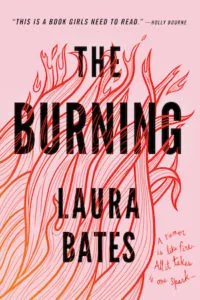
 American Born Chinese by Gene Luen Yang
American Born Chinese by Gene Luen Yang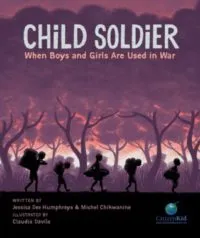 Child Soldier: When Boys and Girls Are Used in War by Jessica Dee Humphreys, Michel Chikwanine, and Claudia Davila
Child Soldier: When Boys and Girls Are Used in War by Jessica Dee Humphreys, Michel Chikwanine, and Claudia Davila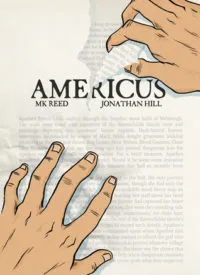 Americus by M.K. Reed and Jonathan Hill
Americus by M.K. Reed and Jonathan Hill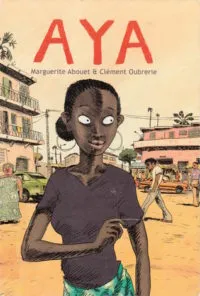 Aya by Marguerite Abouet and Clement Oubrerie, translated by Alisia Grace Chase and Helge Dascher
Aya by Marguerite Abouet and Clement Oubrerie, translated by Alisia Grace Chase and Helge Dascher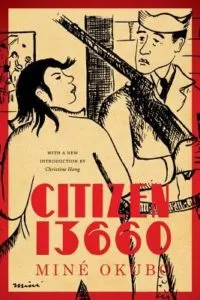 Citizen 13660 by Miné Okubo
Citizen 13660 by Miné Okubo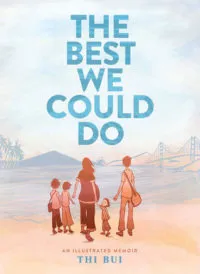 The Best We Could Do by Thi Bui
The Best We Could Do by Thi Bui The Complete Maus by Art Spiegelman
The Complete Maus by Art Spiegelman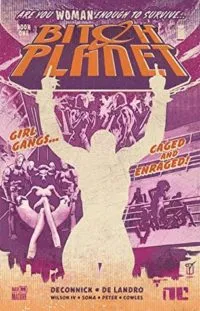 Bitch Planet by Kelly Sue DeConnick and Valentine de Landro
Bitch Planet by Kelly Sue DeConnick and Valentine de Landro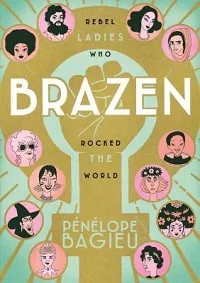 Brazen by Penélope Bagieu
Brazen by Penélope Bagieu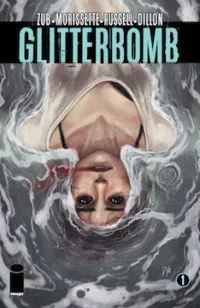 Glitterbomb by Jim Zub and Djibril Morissette-Phan
Glitterbomb by Jim Zub and Djibril Morissette-Phan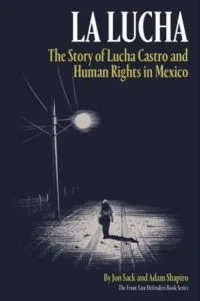 La Lucha: The Story of Lucha Castro and Human Rights in Mexico by Jon Sack and Adam Shapiro
La Lucha: The Story of Lucha Castro and Human Rights in Mexico by Jon Sack and Adam Shapiro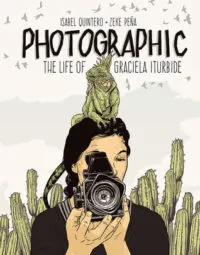 Photographic: The Life of Graciela Iturbide by Isabel Quintero and Zeke Peña
Photographic: The Life of Graciela Iturbide by Isabel Quintero and Zeke Peña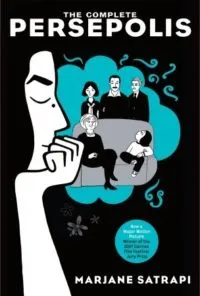 The Complete Persepolis by Marjane Satrapi, translated by Mattias Ripa, Blake Ferris, and Anjali Singh
The Complete Persepolis by Marjane Satrapi, translated by Mattias Ripa, Blake Ferris, and Anjali Singh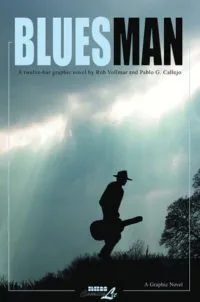 Bluesman by Rob Vollmer and Pablo G. Callejo
Bluesman by Rob Vollmer and Pablo G. Callejo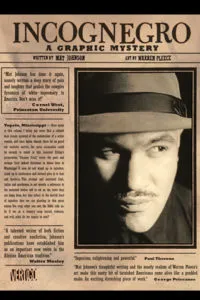 Incognegro by Mat Johnson and Warren Pleece
Incognegro by Mat Johnson and Warren Pleece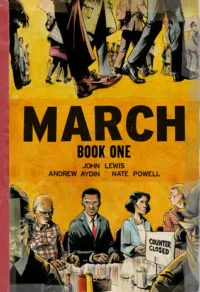 March: Book One by John Lewis, Andrew Aydin, and Nate Powell
March: Book One by John Lewis, Andrew Aydin, and Nate Powell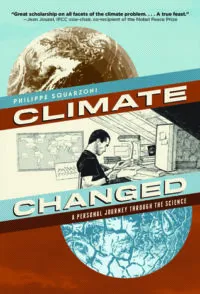 Climate Changed: A Personal Journey through the Science by Philippe Squarzoni
Climate Changed: A Personal Journey through the Science by Philippe Squarzoni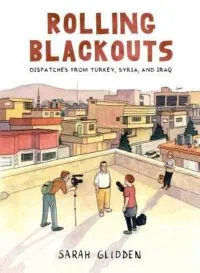 Rolling Blackouts: Dispatches from Turkey, Syria, and Iraq by Sarah Glidden
Rolling Blackouts: Dispatches from Turkey, Syria, and Iraq by Sarah Glidden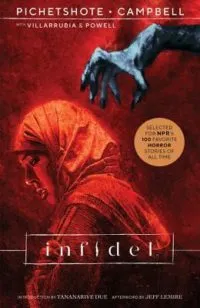 Infidel by Pornsak Pichetshote, Aaron Campbell, Jose Villarrubia, and Jeff Powell
Infidel by Pornsak Pichetshote, Aaron Campbell, Jose Villarrubia, and Jeff Powell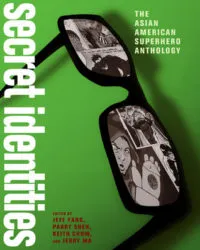 Secret Identities: The Asian American Superhero Anthology edited by Jeff Yang, Keith Chow, Parry Shen, and Jerry Ma
Secret Identities: The Asian American Superhero Anthology edited by Jeff Yang, Keith Chow, Parry Shen, and Jerry Ma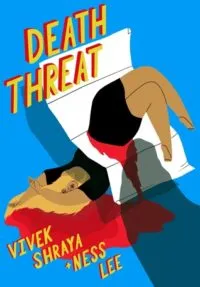 Death Threat by Vivek Shraya and Ness Lee
Death Threat by Vivek Shraya and Ness Lee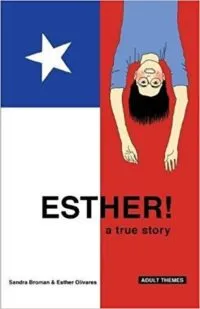 Esther!: A True Story by Sandra Broman and Esther Olivares
Esther!: A True Story by Sandra Broman and Esther Olivares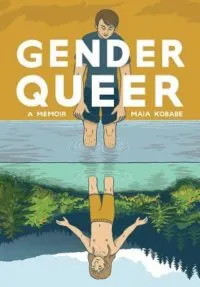 Gender Queer by Maia Kobabe
Gender Queer by Maia Kobabe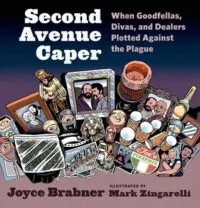 Second Avenue Caper: When Goodfellas, Divas, and Dealers Plotted Against the Plague by Joyce Brabner and Mark Zingarelli
Second Avenue Caper: When Goodfellas, Divas, and Dealers Plotted Against the Plague by Joyce Brabner and Mark Zingarelli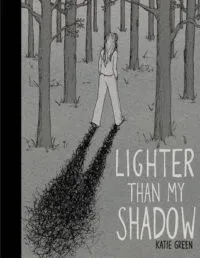 Lighter Than My Shadow by Katie Green
Lighter Than My Shadow by Katie Green









